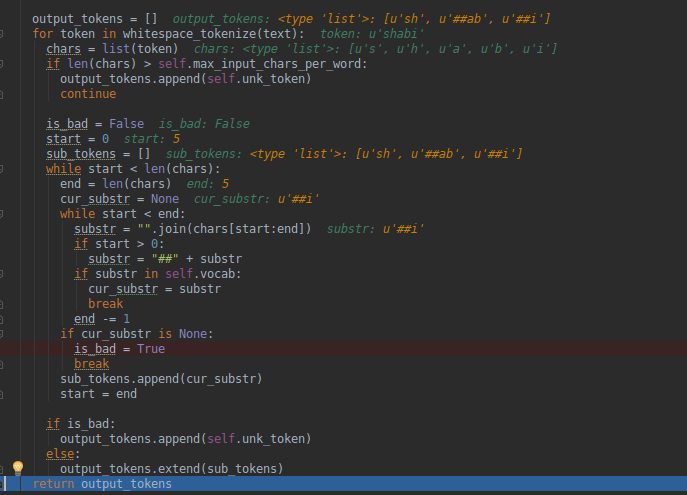直接把自己的工作文档导入的,由于是在外企工作,所以都是英文写的
chinese and english tokens result
input: "我爱中国",tokens:["我","爱","中","国"]
input: "I love china habih", tokens:["I","love","china","ha","##bi","##h"] (here "##bi","##h" are all in vocabulary)
Implementation
chinese and english text would call two tokens,one is basic_tokenizer and other one is wordpiece_tokenizer as you can see from the the code below.

basic_tokenizer
if the input is chinese, the _tokenize_chinese_chars would add whitespace between chinese charater, and then call whitespace_tokenizer which separate text with whitespace,so
if the input is the query "我爱中国",would return ["我","爱","中","国"],if the input is the english query "I love china", would return ["I","love","china"]

wordpiece_tokenizer
if the input is chinese ,if would iterate tokens from basic_tokenizer result, if the character is in vocabulary, just keep the same character ,otherwise append unk_token.
if the input is english, we would iterate over one word ,for example: the word is "shabi", while it is not in vocabulary,so the end index would rollback until it found "sh" in vocabulary,
in the following process, once it found a substr in vocabulary ,it would append "##" then append it to output tokens, so we can get ["sh","##ab","##i"] finally.

#65 How are out of vocabulary words handled for Chinese?
The top 8000 characters are character-tokenized, other characters are mapped to [UNK]. I should've commented this section better but it's here
Basically that's saying if it tries to apply WordPiece tokenization (the character tokenization happens previously), and it gets to a single character that it can't find, it maps it to unk_token.
#62 Why Chinese vocab contains ##word?
This is the character used to denote WordPieces, it's just an artifact of the WordPiece vocabulary generator that we use, but most of those words were never actually used during training (for Chinese). So you can just ignore those tokens. Note that for the English characters that appear in Chinese text they are actually used.